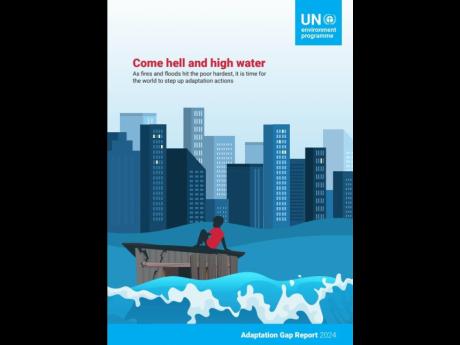Earth Today | Science, the solution
Research reports lend insights into solving the climate crisis
THE UNITED Nations Environment Programme (UNEP) last year produced a series of reports, all championing the value of science as part of the solution to the climate crisis – the impacts of which continue to leave some countries reeling.
Among those reports, the UNEP notes in its Annual Report for 2024, is the latest Emissions Gap Report – titled No more hot air … please! – which revealed that countries must deliver 42 per cent off annual greenhouse gas (GHG) emissions by 2030 in the next round of their nationally determined contributions (NDCs) due this year.
NDCs reflect specific country efforts to cut GHGs, such as carbon dioxide, methane and nitrous oxide, that fuel the warming of the planet and trigger the range of climate risks and threats. Those risks and threats include sea level rise, extreme hurricane and drought events, a decline in freshwater resources, impaired food security and undermined public health.
“If they do not, the Paris Agreement goal of limiting global warming to 1.5 degrees Celsius by 2100 will not be achievable. Based on current policies, a devastating temperature rise of 2.6 degrees Celsius to 3.1 degrees Celsius this century is projected,” noted UNEP in its 2024 Annual Report.
The Emissions Gap Report, among other things, therefore called for big emitters inside the G20 to do their fair share of emissions reduction.
“Illustrative findings show that the G20 members, excluding the African Union, must go further and faster: current NDC targets for the G20 collectively are neither aligned with cost-effective nor with fair-share pathways consistent with the temperature goal of the Paris Agreement,” reads a section of the Emissions Gap Report.
G20 countries include the world’s major economies, representing 85 per cent of global GDP, 75 per cent of international trade, and two-thirds of the global population.
“The G20 is a very heterogeneous group of countries, also based on historical, current and per capita emissions. This means that some G20 members will need to cut their emissions faster than others. In addition, stronger international cooperation and support, including through enhanced climate finance, will be essential for ensuring that the opportunities and efforts of meeting global mitigation and development goals can be realised fairly across G20 members and globally,” the report noted.
Another of its reports, the Adaptation Gap Report, titled ‘Come hell or high water’, called for significantly scaled up financial support for developing nations dealing with droughts, floods and other climate-related shocks. This report, the UNEP said, was cited in a landmark decision at the UN Climate Change Conference (COP 29) to triple climate-related finance for developing countries.
Also produced were the Resourcing the Energy Transition Report and the Global Resource Outlook, which together shed light on ensuring “justice, equity and sustainability in minerals development and a circular supply of critical energy transition minerals” while calling for “sustainable resource management” as pivotal to overcoming the triple planetary crisis of climate change, nature loss and pollution.
In addition to those reports, the UNEP also produced the Global Nitrous Oxide Assessment, which showed how the world can cut 40 per cent off emissions of nitrous oxide, a super polluter that damages the ozone layer while also impacting the climate.


